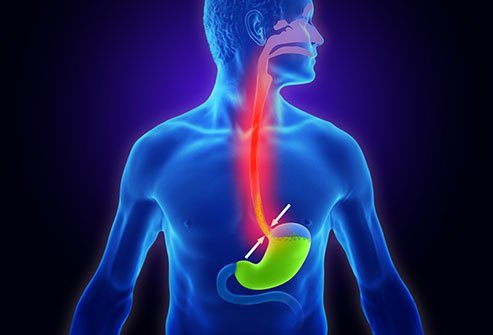What is fundoplication?
- Fundoplication is the standard surgical method for treating gastroesophageal reflux disease (GERD).
- GERD causes inflammation, pain (heartburn), and other serious complications (such as scarring and stricture) of the esophagus.
- GERD results when acid refluxes (regurgitates, or backwashes) from the stomach back up into the esophagus.
- Under normal conditions, there is a barrier to the reflux of acid from the stomach. One part of this barrier is the lower-most muscle of the esophagus (called the lower esophageal sphincter). Most of the time, this muscle is contracted (constricted, or tight), which closes off the esophagus from the stomach.
- In patients with GERD, the sphincter does not function normally. The muscle is either weak or relaxes inappropriately.
- Fundoplication is a surgical technique that strengthens the barrier to acid reflux when the sphincter does not function normally.
What happens during fundoplication?
- During the fundoplication procedure, the part of the stomach that is closest to the entry of the esophagus (the fundus of the stomach) is gathered, wrapped, and sutured (sewn) around the lower end of the esophagus and the lower esophageal sphincter. (The gathering and suturing of one tissue to another is called plication.) This procedure increases the pressure at the lower end of the esophagus and thereby reduces acid reflux.
- Also, during fundoplication, other surgical steps frequently are taken that also may reduce acid reflux. For instance, if the patient has a hiatal hernia (which occurs in 80% of patients with GERD), the contents of the hernia sac (the stomach) may be pulled down from the chest and the opening the diaphragm (the hiatus) through which the esophagus passes from the chest into the abdomen sutured so that stomach remains within the abdomen.
- Fundoplication may be done using a large incision (laparotomy in the abdomen or thoracotomy in the chest) or a laparoscope, which requires only several small punctures in the abdomen. The advantage of the laparoscopic method is a speedier recovery and less post-operative pain.
What are alternatives to fundoplication?
- Although fundoplication is the standard surgical method for treating GERD, endoscopic methods for treating GERD are being developed.
- Endoscopy utilizes endoscopes, which are long flexible tubes that are passed by the doctor through the mouth into the esophagus and stomach. The inside of the esophagus can be viewed through the endoscope and various instruments can be passed through channels in the endoscope.
- In one endoscopic method for treating GERD, an instrument is inserted that delivers an electrical current to the lower esophageal sphincter. This results in scarring which tightens the sphincter. In a second method, sutures are placed in the sphincter to tighten the sphincter.
- Another treatment for GERD involves placing a ring around the lower esophageal sphincter to prevent acid from refluxing into the esophagus. This is called the LINX procedure.
- Other methods also have been employed experimentally. Endoscopic methods offer a simpler way of treating GERD than fundoplication. As more data is being accumulated as to how effective, safe, or long-lasting they are, their use is increasing.


